
JULIA LEE BARCLAY-MORTON – YOGA, WATER AND REWRITING AUTISM
I interviewed writer Julia Lee Barclay-Morton about her experience of autism. Julia began as an experimental dramatist in New York, moving to the UK to
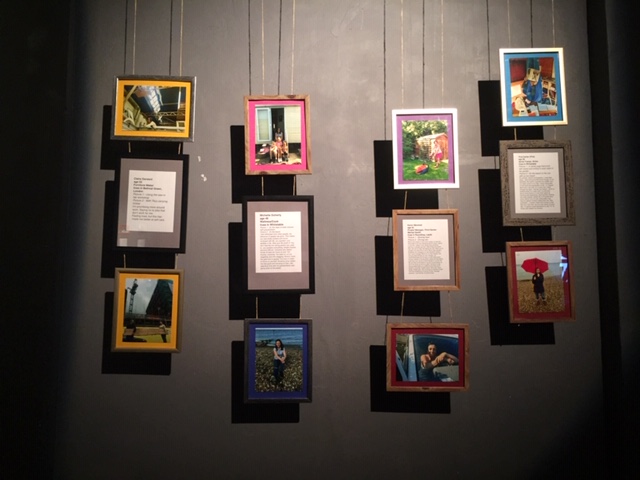
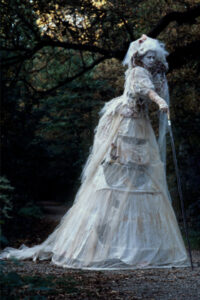
In part two of my interview with theatre/circus director Catrin Osborne, we talked about her stilt walking, her portraits of menopausal women, her creativity, neuro-diversity and winter swimming. In addition, as director of Osborne and What, Catrin has produced some spectacular stage adaptations of groundbreaking books.
Leslie: What are the other notable Osborne and What projects (for instance stilt walking and menopausal women)? How do you begin, grow and develop ideas as an individual and as a company?
Catlin: Walkabout stilt gigs in costume were something I started to do in circus. There are events and festivals and all sorts of street theatre stuff you can do and get paid for as a freelance performer. I love my Miss Havisham stilt costume – made by designer Ilona Karas – because I get to be old and weird!
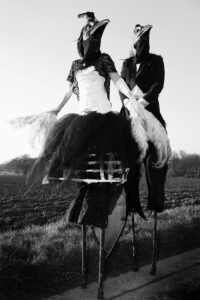
I also love my magpie costume: it always all gets booked for Halloween. I think I’m really drawn to dark stuff. Both were inspired by literature. Miss Havisham – Great Expectations and The Magpies – The Great Gatsby.
The “This is What A Menopausal Woman Looks Like” (photography exhibition and interviews with 24 women which I’m currently crowdfunding to expand it to 100 women) came to me in a flash. I had had such a difficult menopause and had hit a sort of rock bottom. I wasn’t sleeping at all and it was affecting my behaviour and my mental health, I really wasn’t coping. I reached out to a few close friends and my family and they persuaded me to try HRT. I had felt a lot of shame around going on it. Maybe because I’m a yoga teacher I felt I should be able to do this naturally. I thought “I bet there’s loads of women going through all of this in secret”, and I was curious to meet them, talk to them, and to document their stories, their beauty. I thought – these women are so cool! I want to shine a light on them and celebrate them instead of them being hidden, many of them are ex punks, ex ravers, I photographed a plumber, a funeral director, a trapeze artist, a furniture maker, a poet. It was also really healing for me – and I hope the women involved – to share what we were going /had gone through. Women have to go through so much in secret.
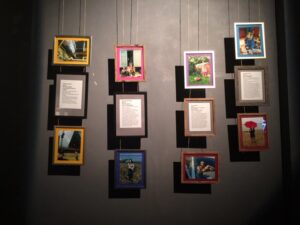
Leslie: Can you unpack what your self-description as neuro-diverse means please? How is it a gift and a creative spur rather than a disability?
Catrin: I only found out recently I’m dyslexic and ADHD. The dyslexic bit means that as a writer I’m constantly googling the spelling of words, which is probably a bit disorganised of me as I’m sure I could get an app or something. I think over the years as a neuro-diverse person you find your own ways of coping with the world. Being dyslexic means I’m really into the bigger picture, which means I love realising large projects and seeing them through from the beginning to the end. Birdy was like that, my novel’s definitely like that. I love putting all the bits together. That’s what I love about living in London (I digress!) and finding bits which lead to other bits you’ve never been to before – making connections. I like the idea that as a dyslexic person I make different connections! I think my mind works more abstractly and less logically. The ADHD is a bit different. I have a lot of energy! I don’t think my Mum was into labelling me in that way but I remember as a child being really unfocused and energetic and kind of all over the place. I think my Mum encouraged me to channel it into sport, which was a good idea – and then I found circus. I believe quite a lot of neuro diverse people work in circus. Apparently people with ADHD people speak out of turn, but I see that as good, provided it’s not rude. I have had to work at not interrupting people as I get very excited and talk a lot – I’ve really got better at that – I feel a lot of shame when I do it though. I do think there is shame around neurodiversity but I think we are all neuro-diverse. I mean no one person thinks the same do they? I think when my ADHD collided with early menopause it was difficult, but now I’m OK, and I think during menopause you look back at yourself and go inwards and you explore, and perhaps become bit more accepting of who you really are, and the mistakes you’ve made in earlier life. I definitely did that.
Leslie: Where does your creativity originate from? What led to you becoming a theatre/circus performer/director, artist and writer?
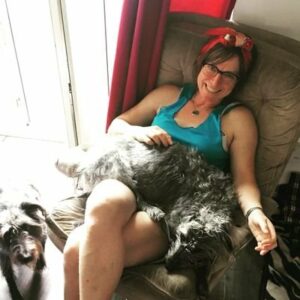
Catrin: I see my creativity as something I am compelled to do or to be. If I didn’t I would definitely have mental health issues, it keeps me sane. When I was little, I was such a show off, I used to be in the garden constantly wanting my family to watch me through the window doing gymnastics. I’ve loved performing but now I love being backstage and creating, thinking. The introvert in me has come out a lot more as I’ve got older. But I love people, I think they’re so interesting. I’m interested in what it means to be human, and also in escaping from the human condition and how we do that, whether it’s through taking drugs, climbing ropes, trying to fly, or jumping in cold water. When I was younger, I always felt like I was in trouble – I’m not sure if that was to do with my ADHD – but when I arrived at art school (at 36) everything I’d been in trouble for all my life suddenly was seen as good or acceptable. I loved that year. I found myself at art school. I will never forget my teachers Pete and Trish for nurturing that creative person inside me. Of course, I had already been performing for many years, but to create shows was even more fun. When I was little I used to make family friends dress up and perform in shows with me on the stairs so it was always there.
Leslie: What’s special about winter swimming? What does it do for you?
Catrin: It’s the best. It’s about just getting on with it. So switching off the thinking brain and going into “doing” mode. I suppose in that way it’s a form of meditation. It’s definitely linked in some way to my writing – it’s a really useful time to think about ideas and characters, words and complexities and how it all fits together while I’m swimming. The feeling afterwards is incredible, and it’s really helped with hot flushes, insomnia and most of all headaches I experienced because of Menopause. It’s been particularly brilliant during lockdown as I’ve started going to the West Reservoir which is only a ten minute cycle ride form my flat and the people who work there are really lovely. Last winter I went to the women’s pond in Hampstead – I had to drive over there so it took up more time and therefore I couldn’t go every day. It felt like an initiation though, in becoming an older woman. I really admired all the older, strong women over there, and listening to them talking in the changing room. I see Menopause as a special transition into a really exciting creative time in life, and for me winter swimming is all part of that. It’s so healing.
Next week I interview artist Sarah Bays about her drypoint Intaglio prints, monotypes and lino cuts.
ABOUT LESLIE TATE’S BOOKS:

I interviewed writer Julia Lee Barclay-Morton about her experience of autism. Julia began as an experimental dramatist in New York, moving to the UK to

I interviewed Gillean McDougall from Glasgow, who edited the collaborative projects Honest Error (on Charles Rennie Mackintosh and his wife Margaret Macdonald) and Writing the

I interviewed French writer Delphine de Vigan, whose book, No et moi, won the prestigious Prix des libraires. Other books of hers have won a clutch

I interviewed Joanne Limburg whose poetry collection Feminismo was shortlisted for the Forward Prize for Best First Collection; another collection, Paraphernalia, was a Poetry Book Society Recommendation. Joanne

I interviewed Katherine Magnoli about The Adventures of KatGirl, her book about a wheelchair heroine, and Katherine’s journey from low self-esteem into authorial/radio success and
| Cookie | Duration | Description |
|---|---|---|
| cookielawinfo-checkbox-analytics | 11 months | This cookie is set by GDPR Cookie Consent plugin. The cookie is used to store the user consent for the cookies in the category "Analytics". |
| cookielawinfo-checkbox-functional | 11 months | The cookie is set by GDPR cookie consent to record the user consent for the cookies in the category "Functional". |
| cookielawinfo-checkbox-necessary | 11 months | This cookie is set by GDPR Cookie Consent plugin. The cookies is used to store the user consent for the cookies in the category "Necessary". |
| cookielawinfo-checkbox-others | 11 months | This cookie is set by GDPR Cookie Consent plugin. The cookie is used to store the user consent for the cookies in the category "Other. |
| cookielawinfo-checkbox-performance | 11 months | This cookie is set by GDPR Cookie Consent plugin. The cookie is used to store the user consent for the cookies in the category "Performance". |
| viewed_cookie_policy | 11 months | The cookie is set by the GDPR Cookie Consent plugin and is used to store whether or not user has consented to the use of cookies. It does not store any personal data. |
4 responses
Certainly menopause has become a much more talked about topic. I’ve even read books about it. Nice to meet Catrin and learn a bit about her.
Thank you, Robbie. Yes, Catrin is crowdfunding her next part of her interesting menopause project https://www.crowdfunder.co.uk/exhibition-of-photographs-of-menopausal-women
Fascinating second part of the interview. I love the stilt costumes, and I can empathise with the difference menopause makes. I agree it’s something we don’t talk about as we should. Good luck to Catrin with all her projects.
And thank you, Olga for your interest! 🙂 🙂 🙂